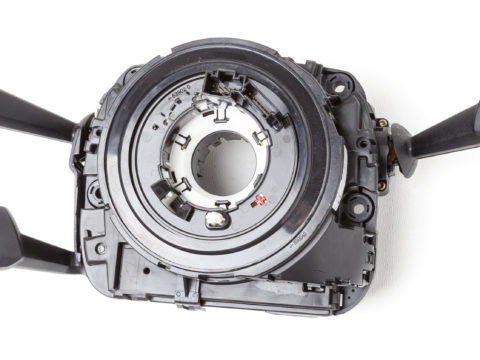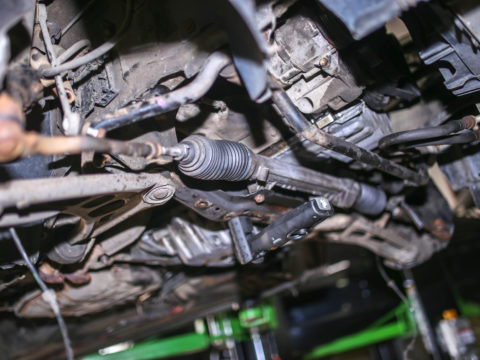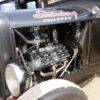Most modern cars have a power steering pump that helps you turn the steering wheel. This system provides the driver with assistance because turning the wheel while stopped can be very difficult, as the vehicle’s weight makes turning the tires difficult.
Without an operating power steering pump, driven properly by the pulley system on the car, it can be almost impossible to turn the wheel at slow speeds. And changing the power steering pulley and pump can be difficult without one unique tool called a power steering pulley puller.
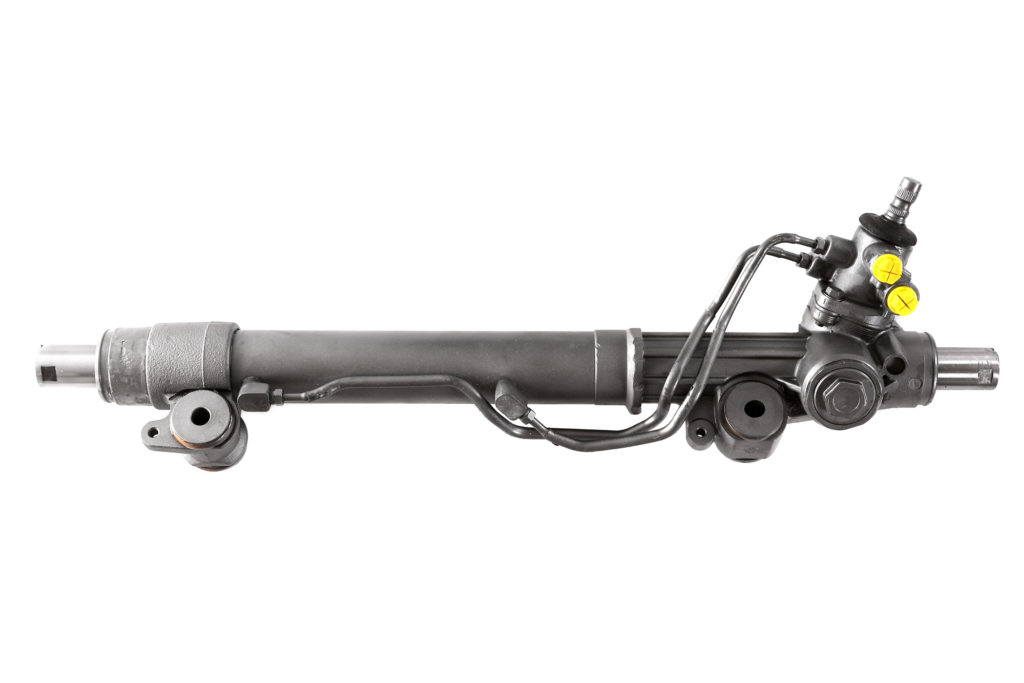
Contents
What is a Power Steering Pulley Puller?
The power steering pulley is a round component that fits onto the head of the power steering pump. This pulley has a belt wrapped around it, and when the engine is on, it drives the belt. When the motor turns the belt, it turns the power steering pulley and drives the power steering pump, making it easier to steer the vehicle.
There are different configurations of how the belts and pulleys get arranged. Sometimes there is one long belt, called a serpentine belt, that wraps through a few pulleys, like the power steering pulley, the air conditioner pulley, and more. Other designs use one belt for each pulley.
Either way, since the power steering pulley is round and it’s bolted into place very tightly, it can be very difficult to remove. That’s where your power steering pulley puller comes in. It’s the ideal tool for this situation.
How Does a Power Steering Pulley Puller Work?
Since the pulley is round, and it wants to turn, and it’s quite difficult to stop it from doing so. Most of the standard tools in your toolbox aren’t up to the task, and will likely do more harm that good
It’s hard to get leverage on something round, and the central bolt the pulley sits on can’t be damaged, or else you’ll be replacing the pump as well. When you try to remove the pulley, you need to hold the shaft it rides on in place while smoothly twisting the pulley in the opposite direction.
So, the power steering pulley puller helps you by doing two big things. First, it has a collar that provides a strong grip when tightened around the pulley. When you set the collar in place, it has a nut you can grab with a wrench. Now that you have a grip on the pulley, you can use a socket wrench to turn the shaft. Using your other hand, you can rotate the pulley in the opposite direction and remove it from the shaft.
Why Do You Need It?
There are a few reasons you need a power steering pulley puller.
They Make Things Easier
There are little tricks you can do to help remove the power steering pulley from an engine when you don’t have a puller tool. But, they’re sometimes hard to do, and since there is a lot of torque involved, you can get hurt if something slips.
A relatively inexpensive power steering pulley puller makes things much easier and safer too.
Affordability
Power steering pulley puller tools cost only a few dollars. Spending about twenty bucks on one gives you a tool that you can keep in your toolbox for the rest of your life.
Multiple Uses
Power steering pulley puller tools can also help remove other types of pulleys, so they are multi-use tools. They can often help remove both water pump and air conditioner pulleys, as well as power steering pulleys.
As a bonus, since many pulleys are fairly similar, most pulley puller tools come with a kit including adapters for use on different vehicles. All you have to do is choose the right size for the vehicle you’re working on at the time.
Prevent Accidental Damage
When you try to remove a power steering pulley without the right tools, it’s fairly easy to damage the shaft, the pump, or the belt. If you damage any of those components and need replacement, your repair price will shoot up quickly.
Consider that a new belt can cost $100 or more, a new power steering pump can be a few hundred dollars, and if you damage the shaft coming off the motor, you’re looking at a major repair that you might not be able to handle at home. Using a power steering pulley puller tool is an excellent way to help prevent accidental damage during a repair.
How to Use a Power Steering Pulley Puller
If you haven’t used one before, or if you just want a refresher, here’s a quick guide to using a power steering pulley puller.
Step 1: Familiarize Yourself
Take a close look at your tool. It should have two semi-circular pieces that, when fitted together, complete a collar. This is called the split collar, and there is probably a metal sleeve in your kit that slips over it. There will also be a threaded bolt, which is called the puller.
Take a look at the instructions that came with your kit to make sure you understand the components, how they fit together, and how to use them. You should also make sure you’re well-acquainted with the layout of your car under the hood.
Prepare for working by getting your tools ready, and since you’ll be leaning over the fender and the bumper a lot, you might want to use a blanket or towels to cover the car’s paint and protect it from potential damage if you drop something.
Step 2: Set the Bottom split collar Into Place
Fit the thin side of the split collar’s bottom half against the pulley and around the shaft. There is a projecting lip that fits into a groove on the pulley, creating leverage.
Step 3: Fit the Puller and the Top of the split collar
With the bottom of the split collar in place, you can install the threaded bolt from your kit. Its lip fits into the split collar, and once it’s in place, you can fit the top half of the collar around it. Use the sleeve to compress the ring of the split collar. Everything is now locked in place.
Step 4: Break the Pulley Loose
The power steering pulley tends to be very tight. You need to break it loose. So, slide your ratchet over the nut at the end of the bolt from your kit. Use another open-end wrench and grab the collar. The power steering pulley is reverse-threaded. So to remove it, you’re going to turn your ratchet clockwise while putting pressure on your open-end wrench in the opposite direction.
If you can’t get enough leverage or feel like the pulley is still turning, there are wide holes in the pulley, so you can slide a thick screwdriver through one of them to further brace the pulley against spinning. Once you apply the right amount of pressure, the power steering pulley puller will break the seal and start working your pulley off the pump’s shaft.
Step 5: Put on Your New Pulley
Now, with your old pulley removed, you can fit your new one. Simply use the tool in the opposite direction. Remember that to thread the new one in place. You’ll need to be turning counterclockwise! Since it’s easy to get confused, check out this simple demonstration of how to use a power steering pulley puller.
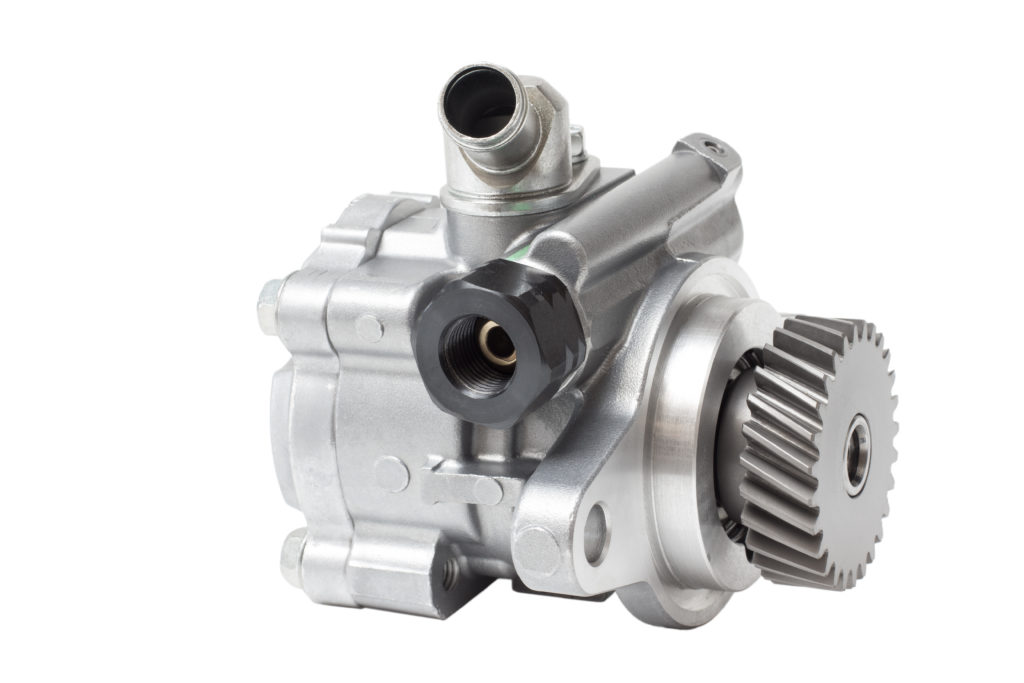
Best Power Steering Pulley Puller on The Market
We have used a bunch of different power steering pulley pullers over the years. Here’s a quick breakdown of some of the best on the market now.
Gearwrench Power Steering Pump Puller Set
The Gearwrench Power Steering Pump Puller Set is universal, comes in a nice plastic case, and works with almost every car made in the United States. It has all the parts you need for installation and removal. It also has adapters to help it fit different size pulleys and shafts, and it’s quite affordable at less than $40.
If there is a knock on this tool, it’s that it only has SAE threads, so it will not work with cars that have metric-sized components. So, be careful not to try and use this on a car with metric components, or you may damage the shaft on your pump.
Thornstone Power Steering Pulley Puller
This power steering pulley puller kit from Thornstone also comes in a handy kit. Its design allows it to work with late-model engines in GM, Ford, and Chrysler vehicles. However, it’s not as universal as the kit from Gearwrench, so make sure to check for fitment before you buy or use it on your vehicle.
This kit only costs about $20, so if it fits your vehicle, it’s a no-brainer to try it out.
Kauplus Harmonic Balancer Pulley Puller
The Kauplus Harmonic Balancer Pulley Puller comes in a kit with fifteen threaded adapters, making it useful for working on almost any vehicle. It has adapters in metric and SAE sizes, and its heavy-duty design also lets you use it on heavier pulley systems.
It’s a little more expensive than the other options, but it is also more versatile, and it comes in a nice hard-shell case.
Orion Power Steering Pump Pulley Puller/Installer Tool Set
The Orion Power Steering Pump Pulley Puller Set is compatible with Ford, GM, and Chrysler vehicles. It works with four different sizes of hubs to meet the needs of different vehicles, so it’s pretty versatile. It also has forcing screws included in the kit, a special feature that means you can use it to service the power steering pulley on some Volkswagen models.
Unlike some other kits, this one comes with an excellent set of instructions that explain how to use the tool. Everything comes in a hard case, and it’s blue, so it’s easy to see at the bottom of a drawer or hidden on a shelf. The kit is also very competitively priced.
Powerbuilt 33 Piece Harmonic Balance Puller and Pulley Installer Kit
The Powerbuilt Harmonic Balance Puller and Pulley Installer Kit features 33 pieces designed to offer the flexibility you need to service almost any vehicle. So, if you’re looking for a kit to service the pulleys on a bunch of different vehicles, this is your best bet.
For most applications, this kit will work flawlessly. Some cars might need a separate adapter, but if you get in touch with Powerbuilt, they may be able to help get you the component you need. However, this kit should work on almost any car, especially those made in America with a V6 or V8 engine.
It’s the most expensive power steering pulley puller on our list, but it’s the most versatile and the most heavy-duty. It, of course, comes with a hard case for keeping your tool and adapters safe and organized.


